Is this woodpecker looking at you or your siding? It is entirely possible as reports of woodpecker damage is increasing in Northern California and homeowners calling 3 Generations 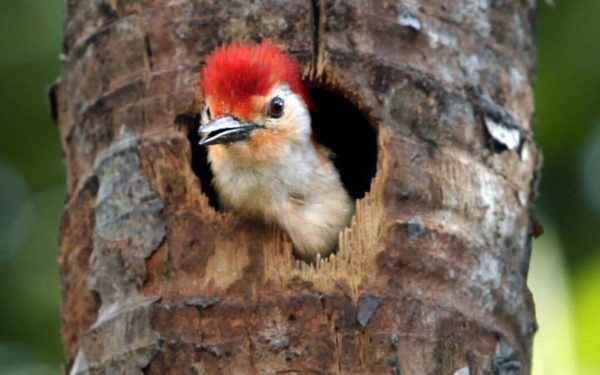 Improvements for a solution have increased every year. These requests are not just coming from heavily wooded areas such as South Lake Tahoe, we have seen damage in Folsom, El Dorado Hills, Petaluma, Napa and even Sacramento! In this blog post you will read about why woodpeckers are hammering your house, what siding types are most susceptible, some siding solutions and one must watch video!
Improvements for a solution have increased every year. These requests are not just coming from heavily wooded areas such as South Lake Tahoe, we have seen damage in Folsom, El Dorado Hills, Petaluma, Napa and even Sacramento! In this blog post you will read about why woodpeckers are hammering your house, what siding types are most susceptible, some siding solutions and one must watch video!
So, why are they pecking your home? According to the Cornell Lab of Ornithology woodpeckers hammer houses for one of four reasons:
- Because it makes a satisfyingly loud noise that proclaims the bird’s territory and attracts a mate. If the birds are drumming for these reasons, they will most likely stop once breeding has begun in the spring (they don’t drum when looking for food).
- Because the bird wants to excavate a nest or roost hole. If the woodpeckers are creating a nest cavity, the hole will be round and large. Nesting holes are usually built in the beginning of the breeding season between late April and May. If you need to evict woodpeckers from your home, aim to do so either before or after the nesting season.
- Because it is feeding on insects living in the siding. If the birds are looking for insects, the holes will be small and irregular.
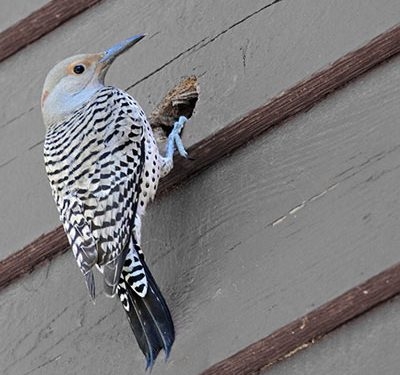 You may have to call an exterminator to get rid of the underlying insect problem. Woodpeckers are particularly fond of the larvae of carpenter bees, leafcutter bees, and grass bagworms.
You may have to call an exterminator to get rid of the underlying insect problem. Woodpeckers are particularly fond of the larvae of carpenter bees, leafcutter bees, and grass bagworms. - Because they are storing food. If you are located in the West, Acorn Woodpeckers peck dozens or hundreds of acorn-sized holes into large trees or houses, and stash a single fresh acorn into each one.
Maybe the biggest problem is that once they find a food or storage source, they are not likely to leave and they will pass this knowledge on from generation to generation. They usually do not open up a business and call it 3 Generations Home Destruction, but that is exactly what they are doing. Below are some of the most common siding types to find woodpecker damage according to the Cornell Lab:
- Aluminum/Vinyl Siding – Houses with aluminum or vinyl siding are not typically prone to woodpecker damage. However, if the fascia boards of the house are made of wood, they may sustain damage from woodpeckers drumming on the wood in which case there will be very small holes in clusters at specific points on the fascia boards. The fascia boards may also become infested with carpenter bees.
- If the siding of the house is completely aluminum or vinyl, the primary aggravation may be the sound of a woodpecker drumming on a gutter or chimney. Drumming behavior is probably to establish a territory or attract a mate and will most likely stop once breeding has begun in the spring. Drumming damage is often minimal.
- Cedar Clapboards – If the house has stained cedar clapboards and is located in a wooded region or woodpecker “hot spot” (an area of high woodpecker population and activity), the house is particularly susceptible to damage, especially if the stain is an earth tone such as brown, dark red, or dark green. There can be a few different types of damage:
- Holes larger then two inches in diameter may be drilled by the woodpecker into the siding, usually between the seam of the two clapboards (Figure 1). Often these holes go through the siding and into the insulation. These are most likely the beginnings of roosting or nesting holes. Smaller, unfinished holes as well as scrapings along the upper board usually surround larger holes. Take a look at this classic video of woodpeckers storing acorns in wood cedar siding – we picked up 3 large contractor size plastic bags full of acorns!
- Scrapes and holes on the corner siding or corner boards of the house may be due to drumming or nesting/roosting behavior. Such damage is less often a case of foraging for insects.
- Holes in the fascia boards may be either the result of drumming, in which case there are usually very small holes in clusters at specific points on the fascia boards, or the result of woodpeckers foraging for carpenter bee larvae.
- If the house has painted cedar clapboards, unless the house is in a woodpecker hot spot, there is often no damage to the siding, especially if the house is painted in shades of white, pastels, or other bright colors. Damage to the fascia boards could be the result of woodpeckers drumming, evidenced by very small holes in clusters at specific points on the fascia boards, or the result of woodpeckers foraging for carpenter bee larvae. Damage may be similar to that described for stained cedar clapboards.
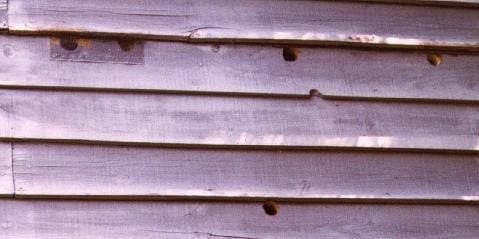 Figure 1. Woodpecker nesting/roosting attempts on cedar clapboards
Figure 1. Woodpecker nesting/roosting attempts on cedar clapboards
- Wood Composite – Woodpeckers do not seem to be attracted to this type of siding, so damage is usually minimal. There may be drumming damage, in which case there are very small holes in clusters at specific points on the fascia boards, or carpenter bee damage to the fascia and/or corner boards. Occasionally a woodpecker will try to excavate roosting or nesting cavities into the hardboards. See Figure 2.
 Figure 2. Woodpecker nesting/roosting attempts into hardwood siding
Figure 2. Woodpecker nesting/roosting attempts into hardwood siding
- Type 111/ Grooved Plywood – If the house is made of stained plywood that mimics the look of boards backed by battens (also known as Type 111) and if there are woodpeckers in the area, the house is very susceptible to damage. There is less damage when the plywood is painted. (Type 111 is made from sheets of plywood into which vertical grooves are cut.) These grooves expose core gaps in the middle layers of the plywood. The wood may sustain a few different types of damage:
- Larger and smaller holes along the corner boards or on the siding of the house, resulting from nesting or roosting attempts, drumming, or insect foraging.
- Almost perfectly horizontal rows of small holes across the boards. These holes are the result of woodpeckers foraging for insects, such as the leafcutter bee, which use these gaps as egg-laying chambers. (Figure 3)
- Damage to the fascia boards may be the result of drumming, in which case there are very small holes in clusters at specific points on the fascia boards, or it could be carpenter bee
 Figure 3. Woodpecker foraging holes in vertically grooved plywood siding
Figure 3. Woodpecker foraging holes in vertically grooved plywood siding
- Resawn Cedar Shakes – If the house is made of stained resawn cedar shakes, especially if the stain or paint is an earth tone, it is susceptible to damage, particularly in a woodpecker hot spot. The damage is usually characterized by large and small holes along the corners of the house, between the bottom of one shake and the top of the next (Figure 4). The damage may be clustered around wires, which are used as perches, attached along the house. These holes look as though they could be roosting or nesting attempts. Smaller holes along the corners could be the result of drumming.
- Holes on the fascia boards could be the result of drumming or woodpeckers foraging for carpenter bees.
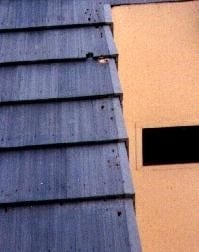 Figure 4. Possible roosting/nesting attempts along with drumming damage on cedar shakes
Figure 4. Possible roosting/nesting attempts along with drumming damage on cedar shakes
- Cedar Shakes/Shingles
- If the house is made of stained cedar shakes or shingles, the house is particularly susceptible to damage, especially in a woodpecker hot spot. (Painted houses often have damage to a lesser extent than stained houses.) Damage is usually characterized by vertical rows of small holes that follow the crack between two bottom shingles up into the overlapping top shingle (Figure 5). This is the result of woodpeckers foraging for insects such as leafcutter bees, which may use these cracks for egg-laying or shelter.
- The damage may also be characterized by large and small holes along the corners of the house, between the bottom of one shake and the top of the next (Figure 6). The damage may be clustered around wires, which are used as perches, attached along the house. These holes look as though they could be roosting or nesting attempts.
- Damage may also be in the form of very small holes along the corners of the house possibly resulting from drumming behavior.
- Holes on the wood fascia boards may be a result of drumming, evidenced by very small holes in clusters at specific points on the fascia boards, or foraging for carpenter bees.
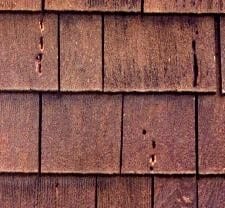 Figure 5. Damage due to woodpecker foraging for insects on cedar shingles
Figure 5. Damage due to woodpecker foraging for insects on cedar shingles
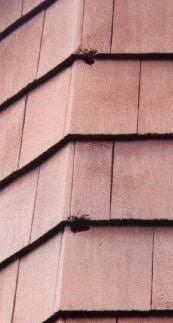
Figure 6. Possible nesting/roosting excavations on cedar shingles
- Tongue-and-Groove/Board-and-Batten
- If the house is made of stained tongue-and-groove or board-and-batten cedar siding there may be damage to the house, especially if the house is located in woods or in a woodpecker hot spot. (Damage is often to a lesser extent if the house is sided with painted hardboard.) Large, medium, or small holes at the seams of the boards usually characterize damage to these siding types (Figures 7 and 8). There might also be scrapes between the boards. These holes and scrapes may be the result of roosting and nesting attempts.
- There may be smaller holes along the corner boards or fascia boards. These may either be the results of drumming behavior, evidenced by very small holes in clusters at specific points along the boards, or the result of searching for carpenter bee larvae.
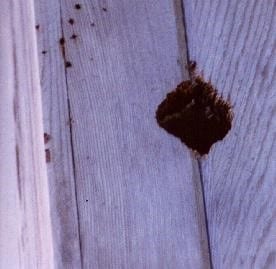
Figure 7. Nesting/Roosting cavity along with very small drumming
holes on cedar tongue-and-groove
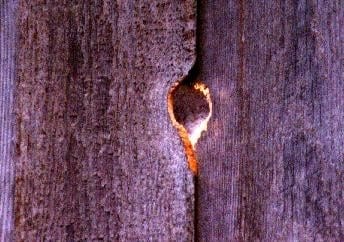
Figure 8. Nesting/Roosting cavity on stained cedar board-and-batten
There is no way to guarantee removal of woodpeckers from your home short of committing a crime and killing a protected animal specie or living in a bubble, but below are some siding types that you should consider:
- Stone/Brick – Ok, this one is the most costly and probably not a great remodeling option, but it is sure to prevent the “hammer.” Please note, that even if your side walls have a new siding, your fascia boards, trim or chimney may be still susceptible.
- Fiber Cement – This one is the most common solution since it is primarily cement based and woodpeckers are likely to move to neighbor’s house.
- LP SmartSide – This highly dense engineered wood siding would likely stop pecking in its tracks and would eliminate most of the bug problems that exist in traditional wood siding. LP® SmartSide® exterior trim and siding is engineered to effectively resist damage from termites and wood boring insects. During the proprietary SmartGuard® process, the engineered wood products are treated to the core with zinc borate. Zinc borate is a naturally occurring additive that has been proven to resist termites and fungal decay for decades.
- Insulated Vinyl Siding – Although not our favorite choice, insulated vinyl siding is a solid option as well. Insulation is form fit to the back of the panel, which eliminates the voids that exists in traditional vinyl siding and add the impact resistance needed to prevent the woodpecker from pecking
Knock on wood pecked wood, but 3 Generations Improvements have never received a call back of woodpeckers returning with any of the above sidings installed. This is not just due to the harder exterior, it is also due to new OSB/Plywood being installed under the siding and the fact that most bug problems are eliminated with the right sheathing, house wrap and siding combination. If you are currently experiencing the headaches associated with the wood pecker “hammer,” we are sorry. But we can help!

